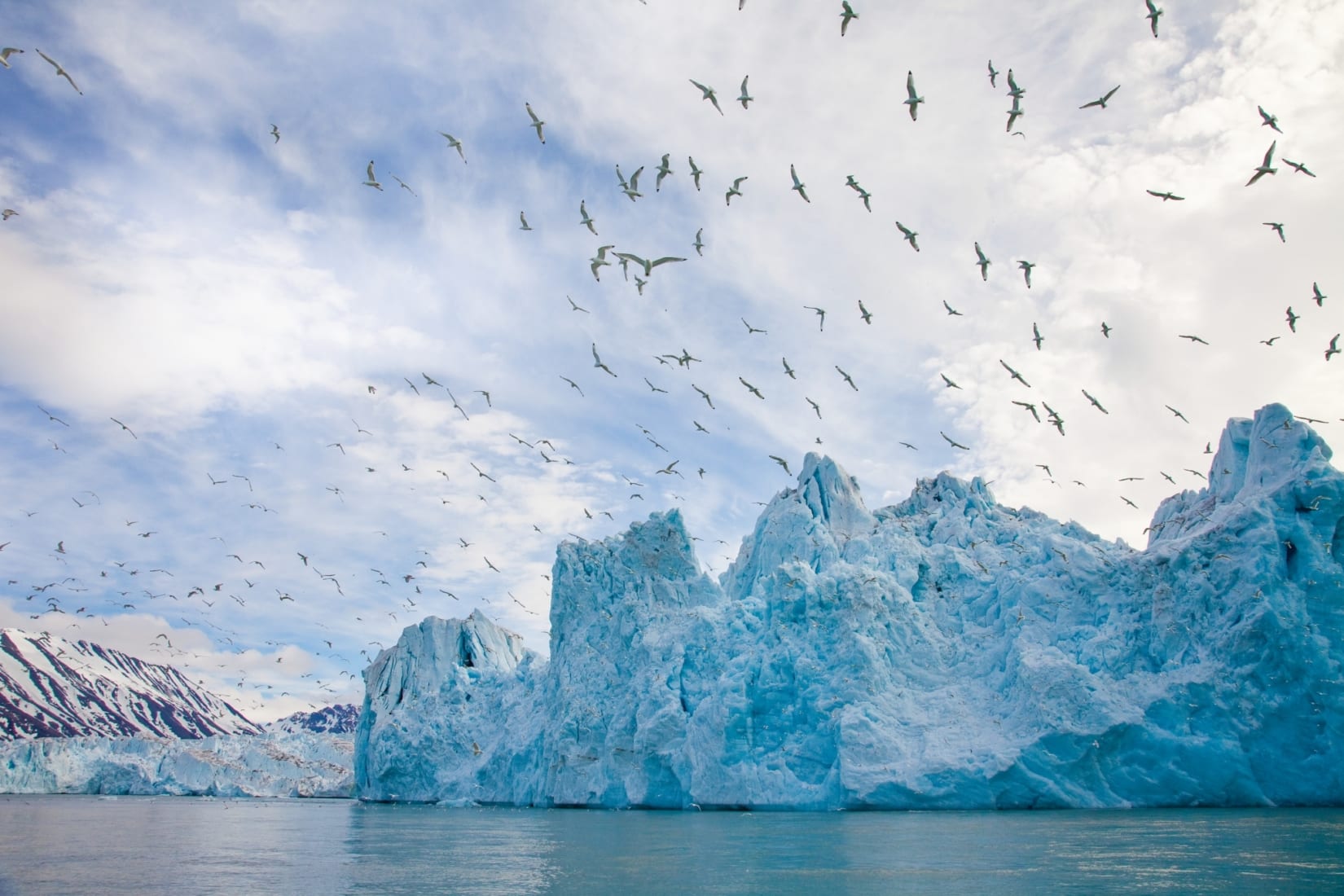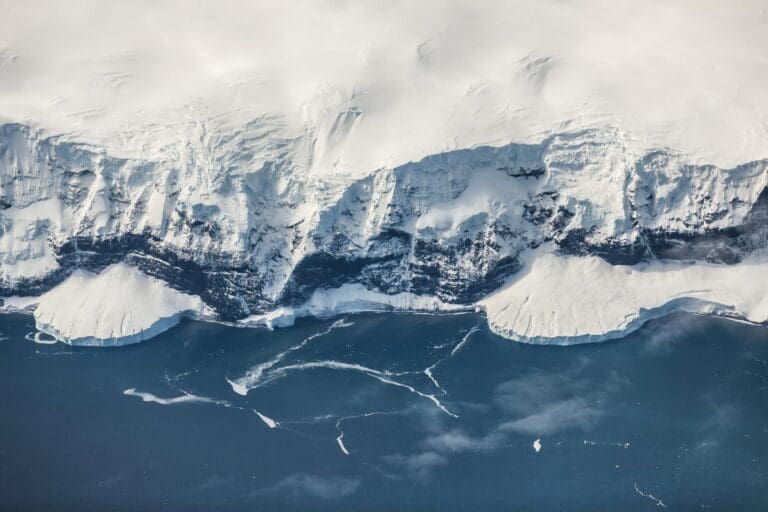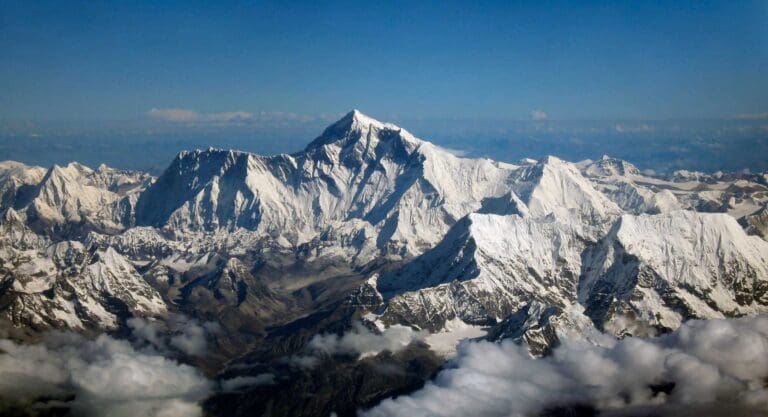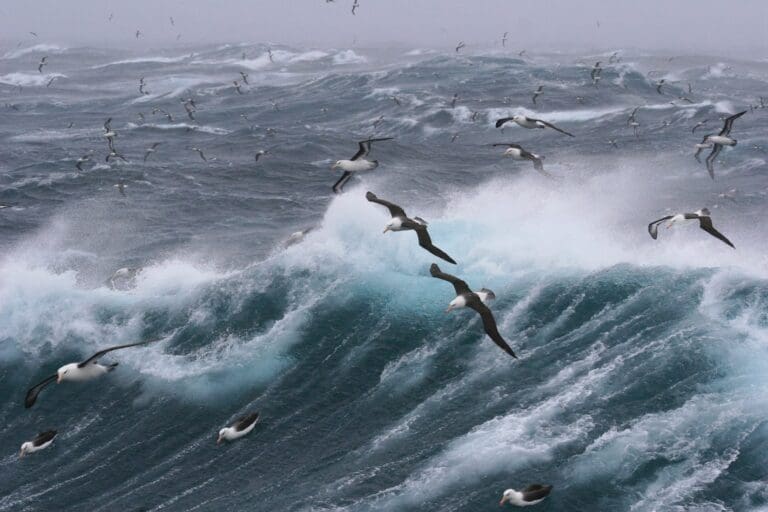The Arctic Cruise Guide
The Arctic Cruise Guide contains everything you need to know on How to Visit the Arctic. This guide is full of information and tips to help you learn about the Arctic. The guide also covers the many options in getting to the Arctic to help you plan your trip.
Guide Topic Summary
- About the Arctic
- Arctic Location and Landscape
- Transportation
- Weather and the Best Time to Visit
- Climate and Sustainability
- Wildlife
- History of the Arctic
- Famous Arctic Explorers
- Must-See Places
- Arctic Activities
About the Arctic
The Arctic is a polar region comprised of the Arctic Ocean and surrounding seas, along with parts of Alaska, Canada (Baffin Island), Finland, Greenland, Iceland, Norway, Russia, Sweden, and smaller islands. Despite dangerously cold temperatures year round, nearly 4 million people live in the Arctic. For thousands of years indigenous people have inhabited the Arctic, fishing, hunting, farming, and collecting wild plants. Unlike the indigenous people, many travelers are not adapted for the extreme cold. Yet, the memorable location coupled with unique wildlife and natural resources attracts tourists, scientists, and those wishing to permanently reside in the Arctic from all over the world.
Arctic Location and Landscape
Located at the northernmost portion of Earth, the Arctic consists of the land and water above the Arctic Circle (66.5°N). The Arctic is considered a tundra, meaning it is treeless and the subsoil is permanently frozen. Aside from the occasional shrub or bush, the region lacks vegetation. On the other hand, the Arctic does not lack water! About 10% of the world’s freshwater can be found in the Arctic. Unlike the rougher seas in the Drake Passage near Antarctica, the Arctic Ocean, or Arctic Sea, is calm. The beautiful blue and icy waters create a sense of serenity that makes sea travel relatively easy.
The terrain of the Arctic is one of a kind. The tall mountains are surrounded by fjords, or long, deep inlets of the ocean on one side and vast plains and plateaus on the other. Both the mountains and ocean nearly always have ice on them due to the high latitude.
Transportation
There are three main options if you are planning an expedition to the Arctic. The first is by plane. Primarily, people tend to travel by air from Canada or Norway. While this may appear to be the most convenient method, it tends to be the least cost effective as special insurance is required along with numerous flights. The next method is the most common: to travel by sea. Those who chose this method usually leave from Norway, Finland, or Russia. Although it takes more time than flying, traveling on a boat allows for an increased experience through better visuals and exposure. The final method, traveling by foot, is perhaps the most dangerous method, yet thrillseekers from around the world have attempted it numerous times. There has been an increase of races and expeditions to the Arctic over the past 30 years or so. This method takes a certain kind of individual, but it is sure to be a memorable experience.
Weather and the Best Time to Travel
The Arctic consists of cool summers and even cooler winters. In the summer, the temperature gets to be as high as about 50°F (10°C). But in the winters, the temperature can plummet to an average of about -30°F (-34°C) at the North Pole. This may seem extreme, or even dangerous, but such temperatures are rare. Usually, the winter climate is actually tolerable. Temperatures for seafarer cruises to Svalbard range from 25 to 45°F. The summer months are the most popular times to visit the Arctic, but many come to explore the Arctic in the others seasons as well, as each season has something unique to offer. A great deal of animals in the Arctic hibernate in the winter, so spring and summer are great times to visit as many animals begin their hunting and breeding seasons.
Climate and Sustainability
Despite the year-round colder weather, according to satellite observations from NASA and the National Snow and Ice Data Center (NSIDC), sea ice has been declining at a rate of 13.2% per decade. The lowest amount of Arctic sea ice in the satellite record was recorded in 2012. The Arctic Council consists of Canada, Denmark, Finland, Iceland, Norway, Russia, Sweden, and the United States. The Arctic Council works together to protect both the land and natural resources the Arctic has to offer, along with the indigenous people. They have numerous groups that work to promote sustainability, particularly the Sustainable Development Working Group (SDWG) and the Protection of the Arctic Marine Environment (PAME). The Arctic Council realizes the Arctic economy and indigenous people rely on natural resources to support themselves, so they come up with different ways to adapt to climate change and teach people the best ways to reduce their carbon outputs in order to preserve the Arctic’s natural beauty.
Arctic Wildlife
Despite tough terrain and freezing temperatures, there are many unique animals that call the Arctic their home. There are nearly 40 different mammals in the Arctic, half of which are marine mammals. These animals are able to survive in such cold temperatures due to increased coat thickness and blubber. The most commonly spotted animals are arctic foxes, reindeer, walruses, polar bears, narwhals, belugas, and musk-oxen. There are also numerous bird and fish species. Unfortunately, the Arctic sea ice is shrinking far too fast for animals to adapt, and many are physically suffering as they lose their habitats. This is evident in polar bears, who are becoming desperate for food as their habitats shrink due to climate change. Stopping climate change is the only hope for many of these special animals.
History of the Arctic
An early, proto-Inuit group of hunters and fishermen began settling the Arctic over 10,000 years ago. For thousands of years, small hunter/gatherer groups were the only inhabitants of the Arctic region. In the late 15th century, Europeans began colonizing Iceland, Greenland, Norway, Sweden, Denmark, and Finland. In the early 1900s, the Northwest Passage was discovered, providing a route to the Pacific Ocean through the Atlantic Ocean and increasing exploration and colonization. Today, it is nearly unrecognizable, as about 4 million people reside in the Arctic, building communities and transforming the landscapes.
Famous Arctic Explorers
Pytheas
An ancient Greek sailor who, supposedly in 325 B.C., navigated through the British Isles and penetrated the Arctic Circle. Some scholars believe his tale to be true, as he accurately described the aurora borealis and the ice-filled waters of the Arctic.
Svavarsson, Ulfsson, and Erik the Red
Gardar Svavarsson was one of the first Norseman, or Viking, to reach Iceland in the 9th century A.D. He sparked a massive wave of colonization in Iceland. Shortly after in the 10th century A.D., Gunnbjörn Ulfsson’s ship was caught in a storm and he landed in Greenland. His detailed report of the land is what led Erik the Red to create a colony in Greenland in the late 9th century A.D.
The Vikings
For hundreds of years, the Vikings possessed control of Scandinavia and the Arctic. Vikings are known for raiding, trading, and exploring. They were in power from as early as the 9th century A.D. until about the 12th century A.D.
Robert McClure and Roald Amundsen
Robert McClure was the first person to find an ice-bound northern route in the Arctic in the late 19th century. Roald Amundsen was the first to make a complete journey through the Northwest Passage in 1903.
Robert Peary
On April 6, 1901, Peary is recognized as the first official person to make it to the North Pole, though this is still disputed. Others before him tried, such as: William Edward Parry (1827), Charles Francis Hall (1871), the Jeannette Expedition (1879), and many more, especially in the late 19th and early 20th centuries.
Must-See Places in Svalbard
Svalbard, Norway
Svalbard is one of the most popular places to visit within the Arctic Circle. Many travelers from across the globe fly into its capital, Longyearbyen, where they spend some time sightseeing before boarding their cruise ship. The Norwegian archipelago offers a rare combination of stunning wildlife, action-packed adventure, and some of the best scenery on the planet.
Longyearbyen, Svalbard
Longyearbyen, one of the world’s northernmost communities, lies within the Arctic Circle on the island of Spitsbergen. It the capital of the Norwegian archipelago of Svalbard, and is one of the greatest spots in the world to see the Northern Lights. There are plenty of activities to do in Longyearbyen, despite its rural topography. There is the historical Svalbard Museum, along with exciting husky sled rides, mountain trekking, and even snowmobiling! This area is actually relatively populated, and the wildlife is abundant as well.
Stefan’s Garden, Krossfjord
In Stefan’s Garden, you will get a break from the dark cold! The sun shines 24 hours/day at times due to the southward facing cliffs. There is a great deal of vegetation relative to the rest of the Arctic, and there is also a large wildlife presence.
Woodfjorden, Spitsbergen
Woodfjorden is the fourth longest fjord on the north shore of Spitsbergen island in the Svalbard archipelago. It is one of the most picturesque places in the Arctic.
Hornsund, Spitsbergen
Hornsund is a 12 km wide, current-filled fjord that cuts directly through jagged mountains. The crisp, icy water is juxtaposed with dark, tall mountains which date all the way back to the Precambrian Era.
Arctic Activities
The Arctic is the perfect place for adventure! The differing topographies offer a plethora of activities to do. While some prefer to relax in natural hot springs, others opt for more thrilling options. These range from hiking through volcanic terrain and kayaking through fjords to cross country ski races and dog sledding; the adventure and exploration never ends!
Arctic cruises often include educational programming led by scientists, historians, and naturalists who accompany passengers on excursions. These experts provide deeper insight into the region’s geology, wildlife, and culture, enhancing the experience beyond sightseeing.
As you can see the Arctic is truly a wonderful place and we hope you get the chance to visit it one day. We hope you found our Arctic Travel Guide to be informative and helpful.
Happy Adventuring!
Cheers,
Jeff
Jeff Bonaldi
Founder
The Explorer’s Passage
About Jeff Bonaldi
Jeff Bonaldi is the Founder and CEO of The Explorer’s Passage, a premier adventure travel company. His mission is to provide travelers with the opportunity to transform their lives and the planet through the power of adventure.
Learn more about Jeff’s story and his company HERE.
Share this amazing location!







